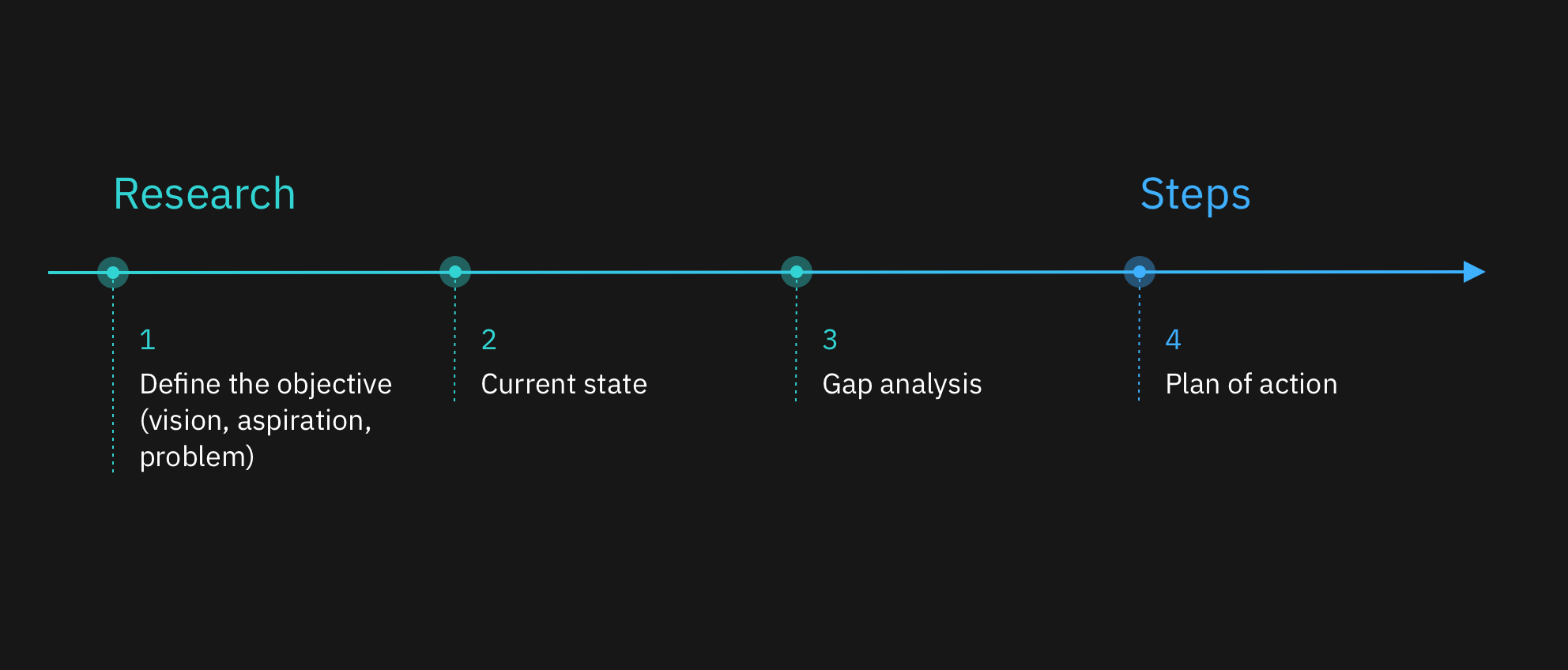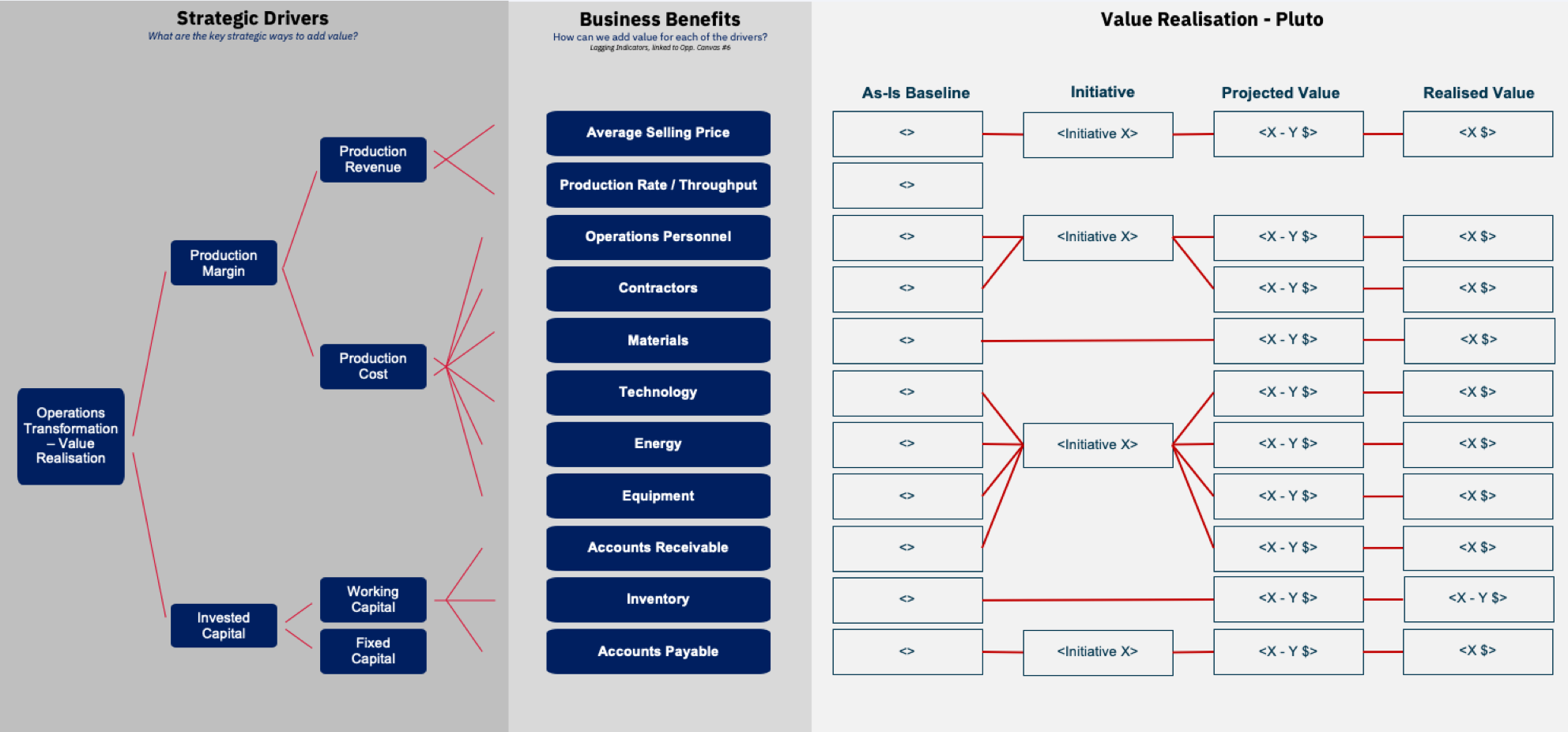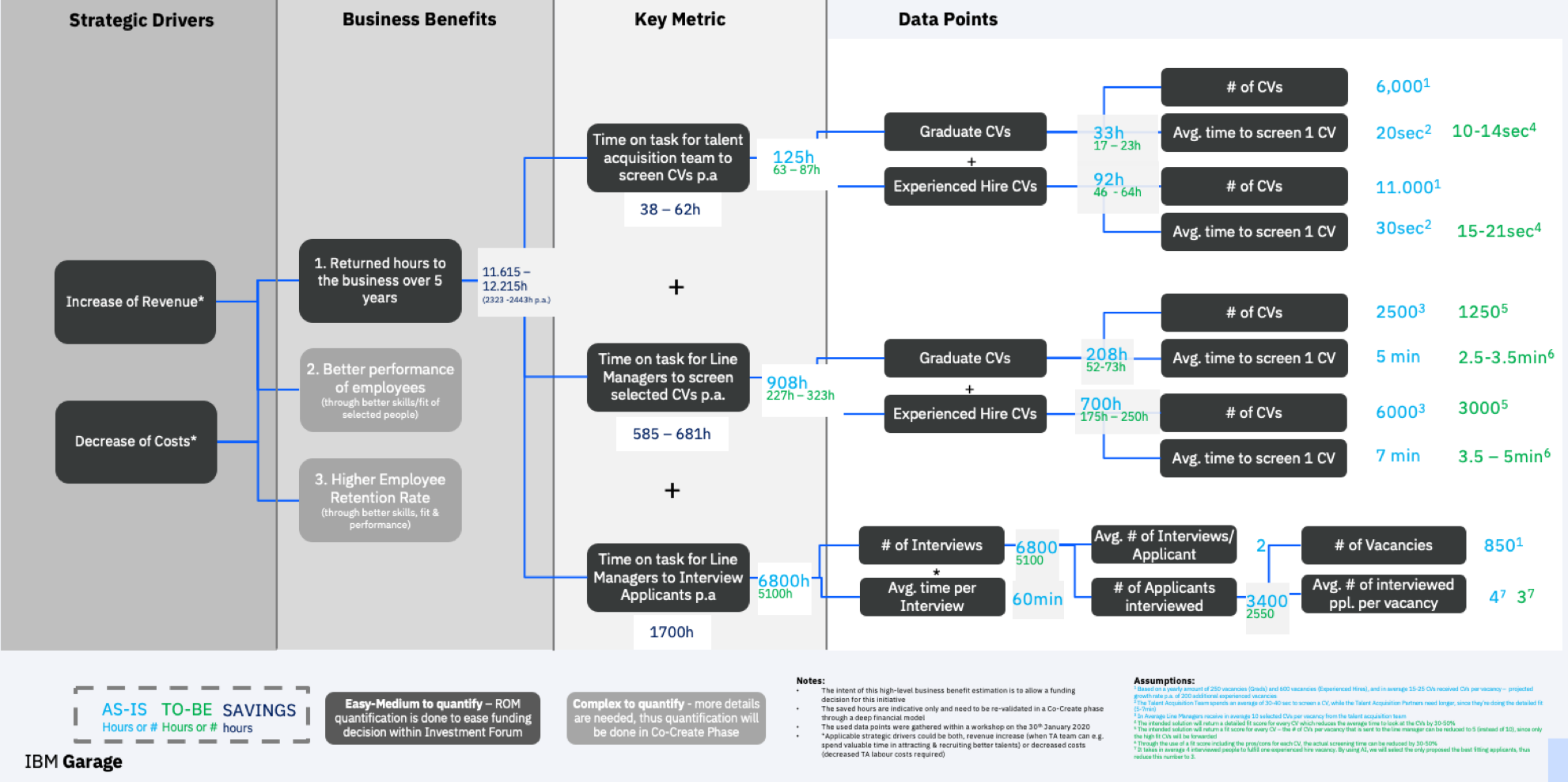At an opportunity level, value trees still start on the left, generally with a high-level objective such as increasing revenue or decreasing costs. Once the top-level goals have been identified, the next step is to define the value drivers that drive performance and determine how to best measure them. In the example above, the value drivers for the onboarding tool being built by the Woodside Garage are “returned hours to the business,” “better performance of employees,” and “higher employee retention rate.”
The rest of the value tree shows the specific formulas and calculations that will allow the Garage to measure their impact on the high-level value drivers. Getting an accurate measurement will likely require access to back-end data from the client. Building trust as a strategic partner is vital to being able to access this data and make accurate measurements. This is where having value conversations with your client early is such an important step; if you can gain trust early on, then accessing business data later will be easier.



